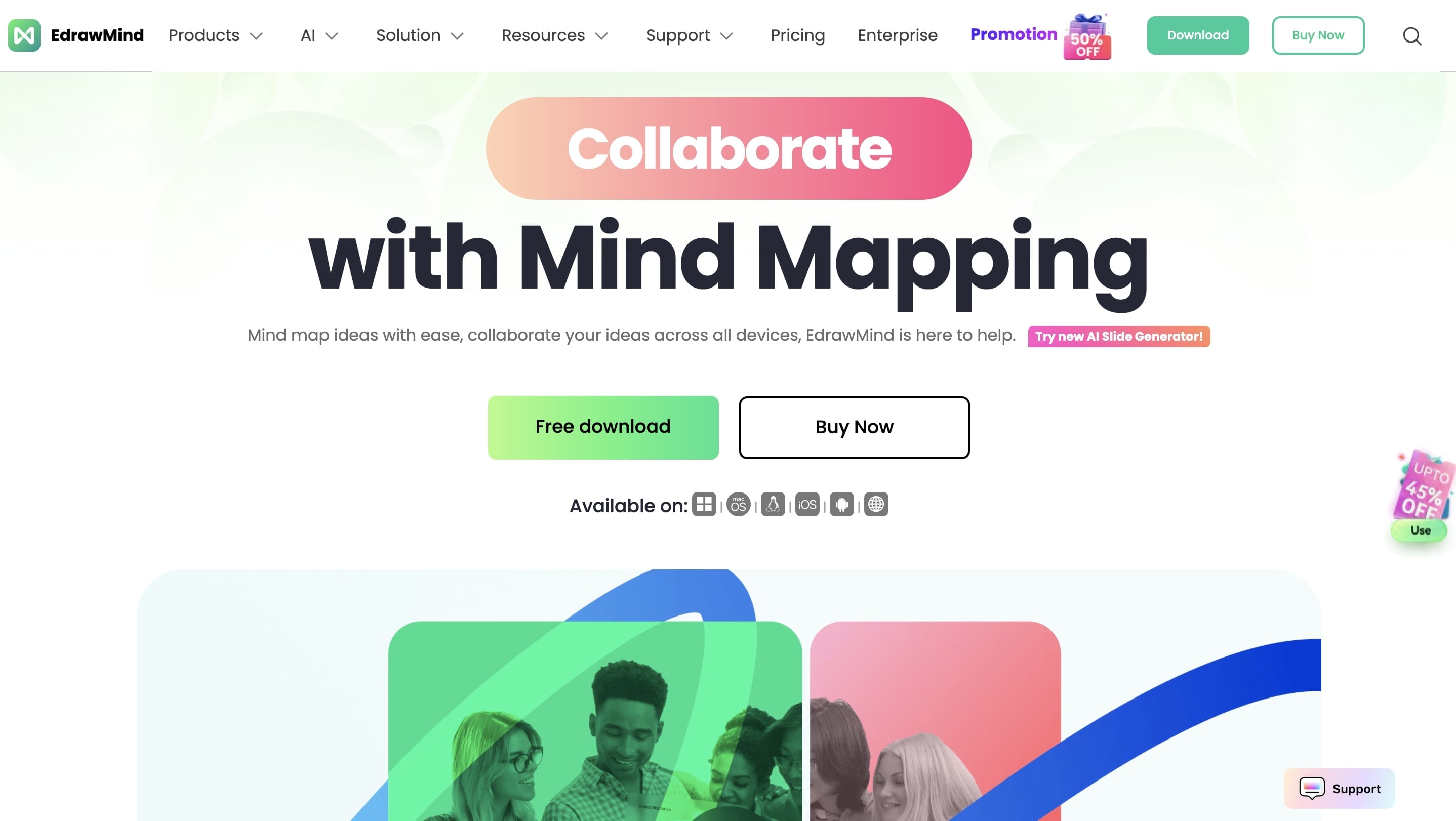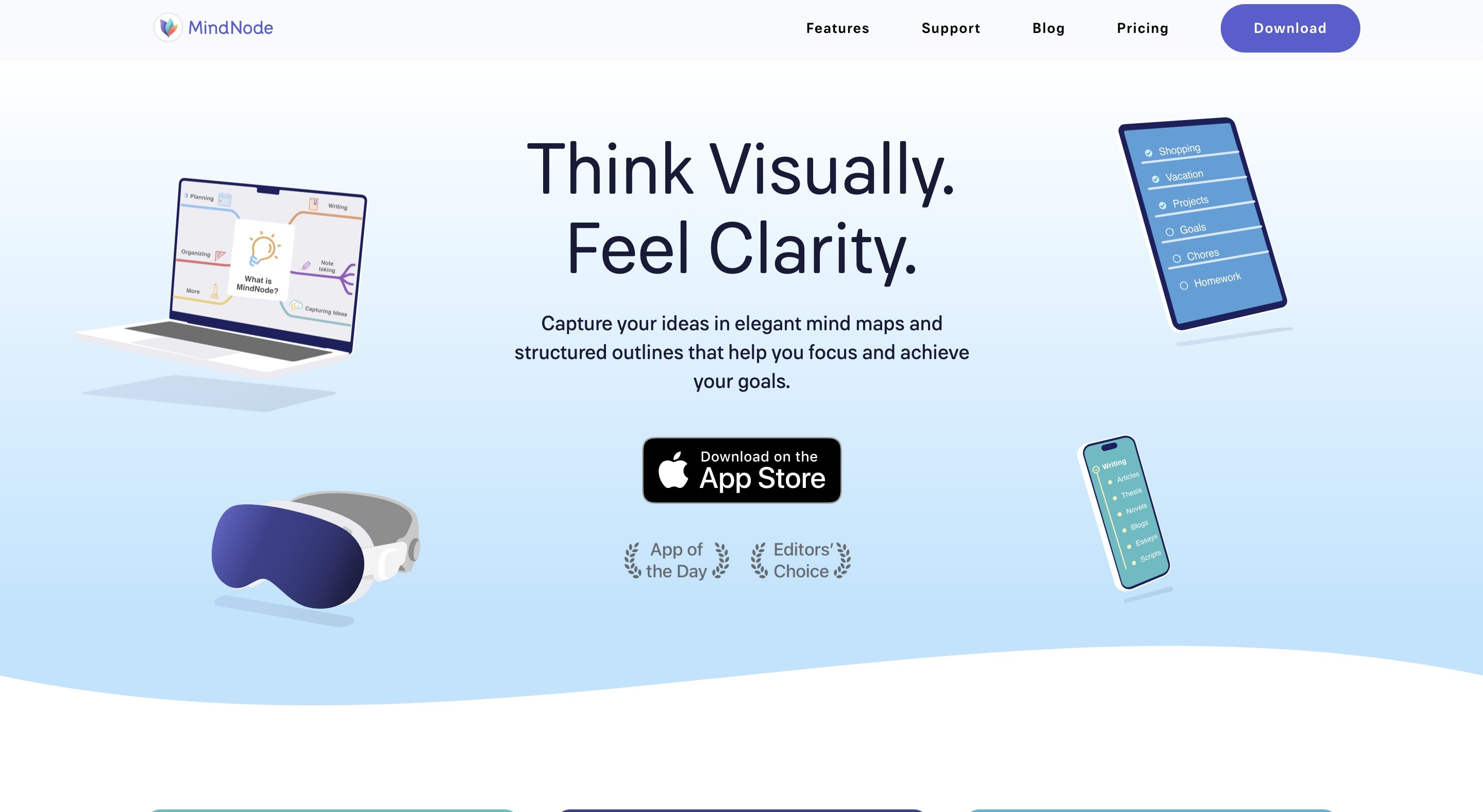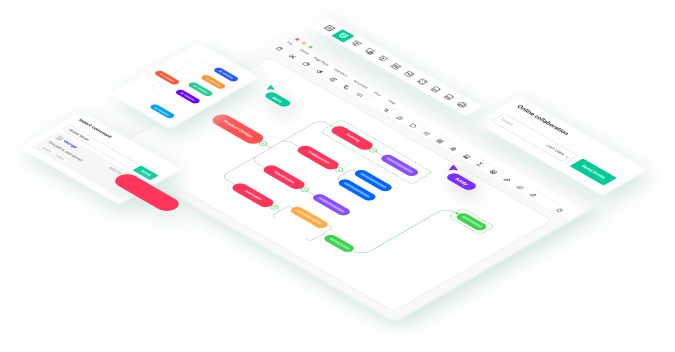You have a brilliant idea. But right now, it’s a chaotic jumble of scattered thoughts, sticky notes, and half-formed connections. You need a digital canvas to tame that chaos, which leads to the big question: which one?
Do you grab the feature-packed powerhouse or the elegant minimalist? This is the core conflict in the EdrawMind vs. MindNode debate, a classic showdown between two of the best mind mapping tools out there.
On one side, you have EdrawMind. It’s the versatile, cross-platform diagramming suite that does mind mapping and so much more. Think of it as the Swiss Army knife for your brain; it has a tool for everything, from Gantt charts for project managers to fishbone diagrams for root cause analysis. It's built for those who need a comprehensive toolkit that works on Windows, Mac, Linux, and mobile.
On the other side stands MindNode, the Apple ecosystem darling. It’s beautiful, impossibly intuitive, and meticulously designed for focused, individual brainstorming. It’s a creative’s companion, a tool that prioritizes flow state and aesthetics above all else. MindNode doesn’t try to do everything; it just tries to do mind mapping perfectly.
Choosing between them isn't about which is objectively 'better,' but which is better for you. We'll break down pricing, user experience, features, and collaboration to help you decide if you need a feature-rich toolkit or a beautifully simple canvas.
In this article
Head-to-Head Comparison: The Deep Dive
This is where the rubber meets the road. I've spent serious time with both tools, and we're going beyond the marketing copy to dig into what it’s really like to use them for actual work.
Pricing & Plans: The Cost of Clarity
Money talks. How you pay—and what you get for it—is often the first hurdle. EdrawMind and MindNode take fundamentally different approaches.
| Feature | EdrawMind | MindNode |
| Model | Freemium, Subscription, Lifetime License | Subscription Only (with Free Trial) |
| Typical Cost | ~$59/year or ~$118 for a Lifetime license | ~$25/year ($2.49/month) |
| Free Tier | Yes, but functionally a demo (e.g., only 2 mind maps) | No true free tier, just a 14-day trial to unlock premium features |
| Platforms | Windows, macOS, Linux, Web, iOS, Android | Apple Exclusive (macOS, iOS, iPadOS) |
EdrawMind gives you options, but they can feel a bit overwhelming. You can dip your toes in with a very restrictive free version, subscribe annually, or go all-in with a lifetime license. Frankly, the free version is more of a demo than a functional tool; you hit the two-map limit almost immediately. I opted for the lifetime license during a sale, and while it was a bigger upfront cost, the peace of mind knowing I own it forever across my Windows PC and Android phone is invaluable. The initial experience, however, felt like a constant upsell—"Do I need Pro, Unlimited, or this bundle?" It's a bit much.
MindNode keeps it dead simple: it’s a subscription. If you hate the subscription model, that might be a dealbreaker right there. But at around $25 a year, it’s a pretty low-cost commitment. I subscribed to MindNode Plus just for seamless sync between my Mac and iPhone, and it feels entirely reasonable. It's less than two fancy coffees for a year of mental organization. The big catch, of course, is that it’s a non-starter if you’re not fully invested in the Apple ecosystem.
User Interface (UI) & Ease of Use: Cockpit vs. Clean Canvas
This is where the two tools truly reveal their core philosophies.
EdrawMind greets you with a feature-dense, Microsoft Office-style ribbon interface. If you’re comfortable in Word or Excel, you’ll feel somewhat at home. It's powerful, but let’s be real—the UI looks like it was designed by a committee that really loved Microsoft Office 2010. It’s functional, but it won’t win any beauty contests. The first time I used it, I felt like I was in a 747 cockpit with a million buttons when all I wanted was to add one simple node. I remember spending a solid five minutes just hunting for the export settings, which were buried in a File menu that felt like a relic.

MindNode, on the other hand, is the poster child for minimalism. The interface just melts away, letting you focus on your ideas. It uses a clean, floating-panel UI that only shows what you need, when you need it. Brainstorming in MindNode feels like sketching on a fresh sheet of paper. It’s so minimalist, it's one step away from being a blank screen with a blinking cursor—and for pure brainstorming, that’s a wonderful thing. Its "Focus Mode" is a killer feature, letting you zero in on one branch of a complex project without the visual noise of the entire map. That said, its deep reliance on iCloud has given me some heartburn. I’ve read horror stories from users about cloud sync failing during major updates, with maps going temporarily missing. That's a real trust issue.

Features Breakdown: The Powerhouse vs. The Purist
Beyond the basic bubbles and lines, what can these tools actually do? This is where the gap between them widens into a chasm.
| Feature | EdrawMind | MindNode |
| Standout Feature 1 | Gantt Charts: Convert mind maps directly into project timelines. | Focus Mode: Dims the rest of the map to highlight one branch. |
| Standout Feature 2 | AI Idea Generation: Creates a mind map from a simple text prompt. | Quick Entry: Rapidly add ideas from the menu bar without opening the app. |
| Standout Feature 3 | Extensive Templates: Huge library for org charts, fishbone diagrams, etc. | Visual Tags & Task Sync: Organize nodes and sync tasks to Apple Reminders. |
| Standout Feature 4 | Slideshow Mode: Instantly turn your map branches into a presentation. | Stunning Themes: A curated set of beautiful, well-designed themes. |
EdrawMind is packed to the gills with features. Its standout is the built-in Gantt chart view. For a recent project launch, I started with the AI generator to create a baseline marketing map. The AI isn't perfect, but it's a fantastic first draft. Then, with a single click, I switched to the Gantt view to assign deadlines and dependencies. It saved me from juggling two separate apps like Trello or Asana. The slideshow mode is another brilliant trick, turning your map into a presentation instantly. It’s a true productivity multitool.
MindNode focuses on perfecting the core mind mapping experience. While outlining a novel, I used its Visual Tags to mark nodes for 'character,' 'plot point,' and 'research needed.' This gave me a high-level, color-coded view of my story structure that was incredibly helpful. The ability to add a task to a node and have it sync directly to my Apple Reminders app was the cherry on top. It’s not about doing everything; it’s about doing a few things with seamless elegance. The MindNode Focus Mode is a game-changer for anyone who gets easily distracted by a sprawling, complex map.
Collaboration & Export: Working Together vs. Flying Solo
How well do these tools play with others? The answer is starkly different.
EdrawMind is built for teamwork. It supports true real-time co-editing, just like Google Docs. You share a link, and everyone can jump in and work on the same map simultaneously, seeing each other's cursors move. Its export options are exhaustive: PDF, PNG, SVG, and even editable Word, Excel, and PowerPoint files.
MindNode is fundamentally a single-user tool. Collaboration is limited to handing off a file or sharing a view-only link. My team once tried to "collaborate" on a MindNode map by sending the file back and forth on Slack. It was a version control nightmare. For our next session, we switched to EdrawMind, shared a link, and were all editing live within minutes. The difference in teamwork was night and day. MindNode’s export options are solid for individual use (PDF, Markdown, OPML), but it’s not designed for corporate workflows.
Performance & Bugs: Stability and Trust
No software is perfect. As a complex, cross-platform application, EdrawMind sometimes shows its seams. I’ve run into a few frustrating crashes with the Windows version, especially when working with huge maps loaded with images. It’s the trade-off for its jack-of-all-trades nature. And let's be blunt: its parent company, Wondershare, has a mixed reputation for bundling extra software, which can make cautious users wary.
MindNode’s performance is typically snappy and fluid—a key benefit of being a native, hyper-optimized Apple app. The biggest complaints aren't about in-app lag but about the iCloud ecosystem it relies on. As mentioned, sync failures are a recurring theme in user forums. The thought of losing years of work because of a botched cloud sync is a potential dealbreaker. It's a reminder that even the most elegant app is only as strong as its backend.
Verdict: So, Who Wins?
Forget a simple winner. The right choice completely depends on who you are and what you need to accomplish.
Choose EdrawMind if you are:
- The Corporate Power User: You need Gantt charts, org charts, and other business diagrams. You live in meetings and must turn brainstorming sessions into actionable project plans.
- The Cross-Platform Pro: You bounce between a Windows PC at the office, a Mac at home, and an Android phone on the go. You need your tools to be everywhere.
- A Collaborative Team: You require real-time co-editing for group brainstorming, strategic planning, or remote workshops. Simple as that.
In short: Choose EdrawMind for versatile, feature-rich productivity. It’s the powerful, pragmatic choice for business and project management where collaboration is non-negotiable.
Choose MindNode if you are:
- The Apple Purist: You live and breathe the Mac, iPhone, and iPad ecosystem. You value seamless integration above all else.
- The Creative Individual: You're a writer, student, or solo entrepreneur who values aesthetics, focus, and a beautiful experience for capturing ideas.
- The Quick Brainstormer: You need a fast, frictionless way to get thoughts out of your head without getting bogged down by a complex interface.
In short: Choose MindNode for a beautiful, simple, and focused brainstorming experience. Trying to use it for a massive corporate project is like trying to build a house with a single, albeit very pretty, hammer.
If neither feels quite right, check out some strong alternatives. XMind is a great all-arounder with beautiful templates, and SimpleMind is praised for its straightforward approach and solid cross-platform support. For a full-blown collaborative online whiteboard, a tool like Miro might be a better fit altogether.
Your Move
Ultimately, the choice between EdrawMind and MindNode is a choice of philosophy. Do you want a tool that can do almost anything, or a tool that does one thing perfectly? Do you prioritize features or flow? Collaboration or creative solitude?
Do you arm yourself with EdrawMind's entire toolbox, or do you embrace the elegant focus of MindNode's single, perfect blade? The best mind mapping software is the one that gets out of your way and lets your ideas shine.
Which one fits your workflow? Drop a comment below and tell us what you use to map out your big ideas.




